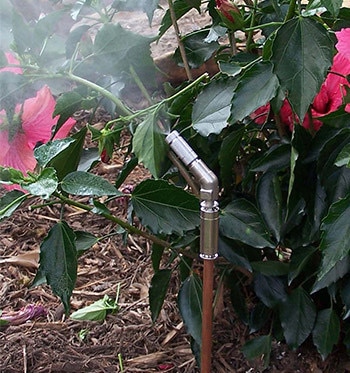
The short answer is that yes, there are natural insect repellants that can be used, but there are a few caveats. It’s also true that there are reasons to change the cycle of your mosquito misting system for these natural solutions.
When it comes to natural and organic insect repellants, there are many to be found, but you need to be careful in selecting the substance to use in your system, as some of them are better than others–and some can do damage to property despite being natural. And because of these differences in the various solutions, they might require you to change the misting schedule you use to control mosquitos.
What Are “Minimum Risk Pesticides”?
The US EPA has a classification for minimum risk pesticides that have pesticidal properties but which also do not have ingredients that are harmful to human health or the environment in reasonable doses. You can read more about these minimum risk pesticides at the EPA’s website.
However, there’s something you need to be careful about with these minimum risk pesticides. While the EPA allows companies to claim that these products are natural or green, they may have hidden problems that affect more than insects.
These pesticides have ingredients that sound all natural–things like cloves, cinnamon, castor oil, etc. They also use essential oils that are formulated from plants like rosemary, lemongrass, and wintergreen.
These pesticides, especially those with high quantities of essential oils in them, may not harm the environment, but they can harm your yard, furniture, and vehicles. These tend to be very chemically aggressive to plastics. While they are misting your yard and driving away mosquitos and other pests, the mist can also be breaking down the plastic surfaces in your yard, including furniture, playground equipment, toys, and, most expensively, the clear coated fiberglass of your boat.
There is also another problem, which is less harmful, but makes the products less effective. Misting pumps draw the misting solution from the bottom of the drum or tank, but these oil-heavy solutions don’t mix well with water and remain on the surface of the water. So, often, these natural and green solutions never actually come out in the misting system enough to do much good.
What Are Natural and Green Alternatives?
We recommend natural misting solutions that have either low concentrations of essential oils in the concentrate or that rely on sodium lauryl sulfate as their primary active ingredient. Sodium lauryl sulfate is an ingredient used in many commercial applications, and considered natural as it is derived from coconut and palm kernel oil. It has been deemed safe by the FDA for many uses, including as a food additive.
A few popular misting chemicals have an active ingredient called “natural pyrethrins” that is a botanical. Don’t let the word “natural” mislead you. While pyrethrin is a very good pesticide and is botanical (it is derived from chrysanthemum flowers) it is highly refined and also contains a man-made “synergist” to increase its effectiveness.
The reason it is so widely used is because it works well to drive away mosquitoes, flushing them from the foliage where they lurk and then impairing their nervous system. Plus, it rapidly degrades in the sunlight, leaving no residue.
Changing the Cycle of Your Mosquito Misting System
Another common concern when it comes to natural mosquito misting solutions is whether they can be used on the same schedule as synthetic misting solutions. Often, they cannot, and the timing of the mosquito misting system should be altered.
“Conventional” pesticides have active ingredients that kill mosquitoes, so a misting event should be scheduled for when the mosquitoes are the most active. This is usually at dawn and dusk.
On the other hand, natural or green mosquito misting chemicals are more of a pest repellent than pesticide. That being the case, the misting should be scheduled closer to the time that people will be in the protected area. Feel free to use the mosquito system remote liberally to give your repellent an extra boost, but keep in mind that, though the EPA claims that the chemicals do not pose a risk to humans, they can be irritating if inhaled.
The Bottom Line on Natural Mosquito Misting Solutions
There are definitely natural, green, and organic mosquito misting solutions, and they can be just as effective at acting as a pesticide as many synthetic solutions. However, you should be careful when selecting the one that you use, as some are better than others, and some have hidden problems that you may not have been aware of–such as damage to plastic surfaces that come into contact with the mist.
We recommend that you do research into your misting concentrate–you should be able to read the labels of ingredients on the manufacturers’ websites–and decide what’s best for you. We know that combining your preferred mosquito misting solution with our mosquito misting system will rid your yard, patio, or porch of pests for years to come.
Contact one of our mosquito system dealers for more information.
